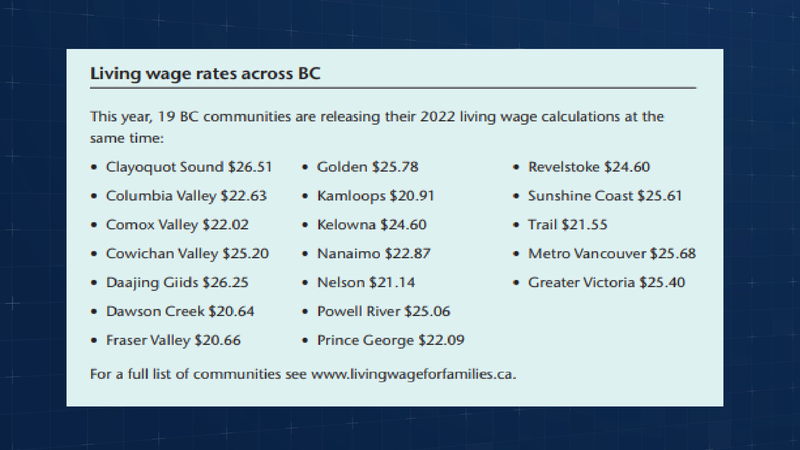
Kamloops sees second largest jump for ‘Living Wage’ in B.C.
KAMLOOPS — A 9.2 per cent increase, to $20.91 per hour for the living wage in Kamloops is the second highest jump in the province behind only Nanaimo. The key factors in the increase are rent and groceries.
“The idea behind it is that paid work should provide a decent standard of living,” said Iglika Ivanova, senior economist with the Canadian Centre for Policy Alternatives (CCPA). “If you are working full time, you shouldn’t have to stop by at the food bank on the way home from work. And unfortunately, that is what’s happening across the province. We are see increases in working poverty. We are seeing massive increases in food bank use.”
The living wage, calculated for two working parents and a family of four, only covers the basic necessities of life.


